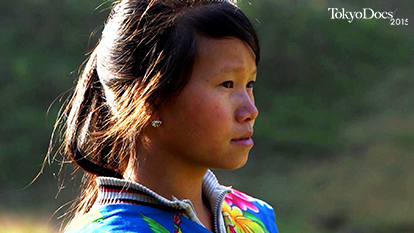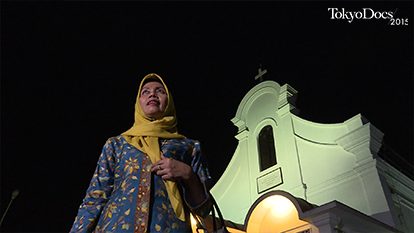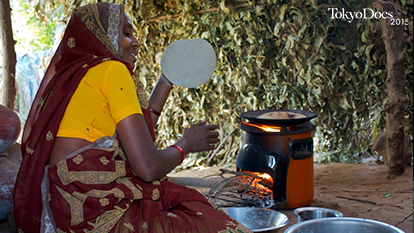- 日本語
- English

‘Colors of Asia’ is a new style of TV documentary series that emerged from the Tokyo Docs documentary festival. It features collaborations between producers and directors from Asian production companies. The concept of the series is focusing on ‘today’s Asia’ from fresh perspectives.
Participating Japanese production companies will guarantee broadcast slots in Japan and provide part of the production budget. Partner companies from other Asian countries are also expected to work towards ensuring the documentaries are broadcast in their home countries. They are also required to contribute to the production budget in order to help improve the quality of the programs.
This type of production system will enable participating production companies to retain the rights to the programs, so they will be given free rein to handle the broadcasting of each series within their home countries. Global sales will be entrusted to a distributor, with profits allocated evenly among all participating companies.
The major characteristics of the Colors of Asia series are outlined below.
The first Colors of Asia project began at the 2014 Tokyo Docs festival when participating Asian producers were asked to propose plans based on the theme of ‘Women - Paving the way for Asia.’ Four companies were selected, with each then selecting a partner Japanese production company.
Within the particular context of each country, the programs depict women striving to make small, daily advances while struggling with convention, conservative climates and societies where males still dominate.
Colors of Asia 2015 will be broadcast on NHK BS1 over four consecutive nights from August 31 to September 3, 2015 (24:00 - 24:30).
The outline of each program is as follows.

Hill tribes in northern Vietnam still retain the custom of marrying early at 14 or 15. 16-year-old La got married 2 years ago and now has a 10-month-old daughter.
La loves singing and once dreamed of being a singer. No longer, though. Nowadays she lives a hard life, working from morning until night.
Her husband is a 2nd year junior high school student. He was very kind in the early days of their marriage. He would cut grass for the cows and help with other housework. Now he ignores her requests for help.
La still loves him, but she wonders ruefully why she had to get married so young.

Hong Kong is home to 190,000 Filipino maids, working far from their homeland. Their places of work provide snapshots of the social situation in Hong Kong. One young working couple hire a maid to prepare meals and take their child to school. Another maid looks after a lonely old man who lives alone now his children have grown up and moved abroad. For these and many other reasons, Filipino maids are in demand in Hong Kong.
On Sundays, the maids congregate in a square in Hong Kong Island’s Central District. Here, they reminisce about families back home, share work concerns and offer comfort to each other.
A maid beauty contest is held each June to celebrate Philippine Independence Day. The ladies dress up in their finest clothes as they try to take the crown. What dreams lie in the hearts of these Filipino maids?

Indonesia is home to the world’s largest Muslim population. 90% of its 250 million citizens follow Islam. Indonesia is also home to 54-year-old Masriyah Amva, a woman who holds a very unusual post for a female Indonesian.
Masriyah is the head teacher of an Islamic boarding school. Each day she works hard to improve the position of women in Islamic society. As she does so, she fights male skepticism about women playing a leading role in society.
Her weapon is her interpretation of the Koran. She firmly believes Allah would not be so unfair as to deny women opportunities. True Islam, she insists, does not teach the predominance of men over women.
However, some of her male pupils are opposed to the idea of being taught by a woman. They tell her openly that men are superior to women, both physically and intellectually. Masriyah steadfastly perseveres in the face of these conservative opinions.
There is one girl who Masriyah is particularly concerned about. The girl is a gifted musician and wants to be a teacher herself one day. Her father is opposed, though. He says music is un-Islamic. As a result, she is about to give up on the idea. Masriyah is trying to support the girl and help her realize her dream.
The documentary is directed by Norhayati Kaprawi, a Muslim woman from Malaysia who has a deep admiration for neighboring Indonesia’s moderate, tolerant version of Islam. As she follows Masriyah closely throughout her day-to-day life, Kaprawi explores how Islamic societies should approach women’s rights from here on.

In Nagpur, a town in central India, there is a type of bread called “Randani Roti.” This used to be eaten exclusively by Dalits, a group once considered the lowest caste in India’s caste system. At the front of their houses, right by the side of the road, women make Randani Roti in the traditional way. They knead cheap grain flour, then turn their pots upside down and light wood fires from below. The dough is then placed on the rounded bottoms of the pots and baked. The deep flavors of the bread won high acclaim and people began flocking there to buy the bread directly. One housewife, Mamta Gedam, had the idea of starting a business. She organized the area’s housewives into a group, borrowed a small kitchen studio, divided up the tasks and set about making the bread in an efficient manner. Her idea was very successful. The bread was a big hit, with the group setting up their own stalls and receiving invites to local festivals. The housewives face many challenges, though.
One businessman heard about the success of the “Randani Roti” and decided to try mechanizing the production process, for example, while one of their customers, a restaurant owner, asked them to teach his staff how to make the bread. Thanks to Randani Roti, the women have managed to support their households and lift them out of poverty. The question now is whether they can protect their secret recipe. The women have resolved to build their own future. They don’t want to hand over this responsibility to men. While protecting and making the most of their traditions, the housewives are carving out a new path. In them, we can see the new face of Indian women.